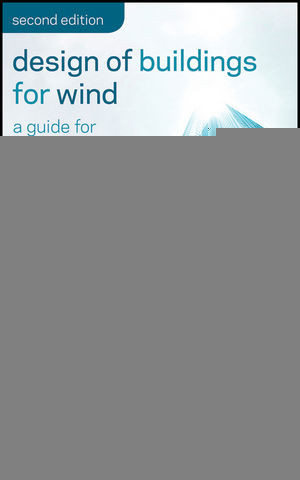(Ebook) Design of Buildings for Wind: A Guide for ASCE 7-10 Standard Users and Designers of Special Structures, Second Edition by Emil Simiu(auth.) ISBN 9780470464922, 9781118086131, 0470464925, 1118086139
ASCE 7 is the US standard for identifying minimum design loads for buildings and other structures. ASCE 7 covers many load types, of which wind is one. The purpose of this book is to provide structural and architectural engineers with the practical state-of-the-art knowledge and tools needed for designing and retrofitting buildings for wind loads. The book will also cover wind-induced loss estimation. This new edition include a guide to the thoroughly revised, 2010 version of the ASCE 7 Standard provisions for wind loads; incorporate major advances achieved in recent years in the design of tall buildings for wind; present material on retrofitting and loss estimation; and improve the presentation of the material to increase its usefulness to structural engineers. Key features:New focus on tall buildings helps make the analysis and design guidance easier and less complex.Covers the new simplified design methods of ASCE 7-10, guiding designers to clearly understand the spirit and letter of the provisions and use the design methods with confidence and ease.Includes new coverage of retrofitting for wind load resistance and loss estimation from hurricane winds.Thoroughly revised and updated to conform with current practice and research. Content: Chapter 1 Overview (pages 1–5): Chapter 2 Asce 7?10 Wind Loading Provisions (pages 7–20): Chapter 3 Regular and Simplified Approach: Risk Category, Basic Wind Speed, Enclosure, Exposure, Topographic Factor (pages 21–29): Chapter 4 Regular Approach: Steps Common to all Buildings/Other Structures (MWFRS and C&C) (pages 31–35): Chapter 5 Regular Approach: Buildings, Parapets, Overhangs (“Directional” Procedure), MWFRS (pages 37–56): Chapter 6 Regular Approach: Low?Rise Buildings, Parapets, Overhangs (“Envelope” Procedure), MWFRS (pages 57–63): Chapter 7 Regular Approach: Structures other than Buildings, MWFRS (pages 65–80): Chapter 8 Simplified Approach: Enclosed Simple Diaphragm Buildings, Parapets, Overhangs (MWFRS) (pages 81–93): Chapter 9 Regular and Simplified Approaches: C&C (pages 95–106): Chapter 10 Atmospheric Circulations (pages 107–115): Chapter 11 The Atmospheric Boundary Layer (pages 117–136): Chapter 12 Extreme Wind Speeds and Wind?Induced Effects (pages 137–161): Chapter 13 Bluff Body Aerodynamics Basics; Aerodynamic Testing (pages 163–184): Chapter 14 Structural Dynamics (pages 185–202): Chapter 15 Aeroelasticity (pages 203–215): Chapter 16 Structural Reliability under Wind Loading (pages 217–235): Chapter 17 Loss Estimation (pages 237–246): Chapter 18 Rigid Buildings (pages 247–260): Chapter 19 Tall Buildings (pages 261–285):
*Free conversion of into popular formats such as PDF, DOCX, DOC, AZW, EPUB, and MOBI after payment.


